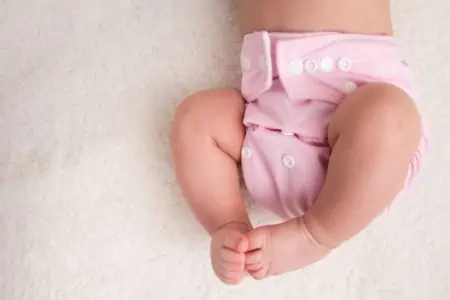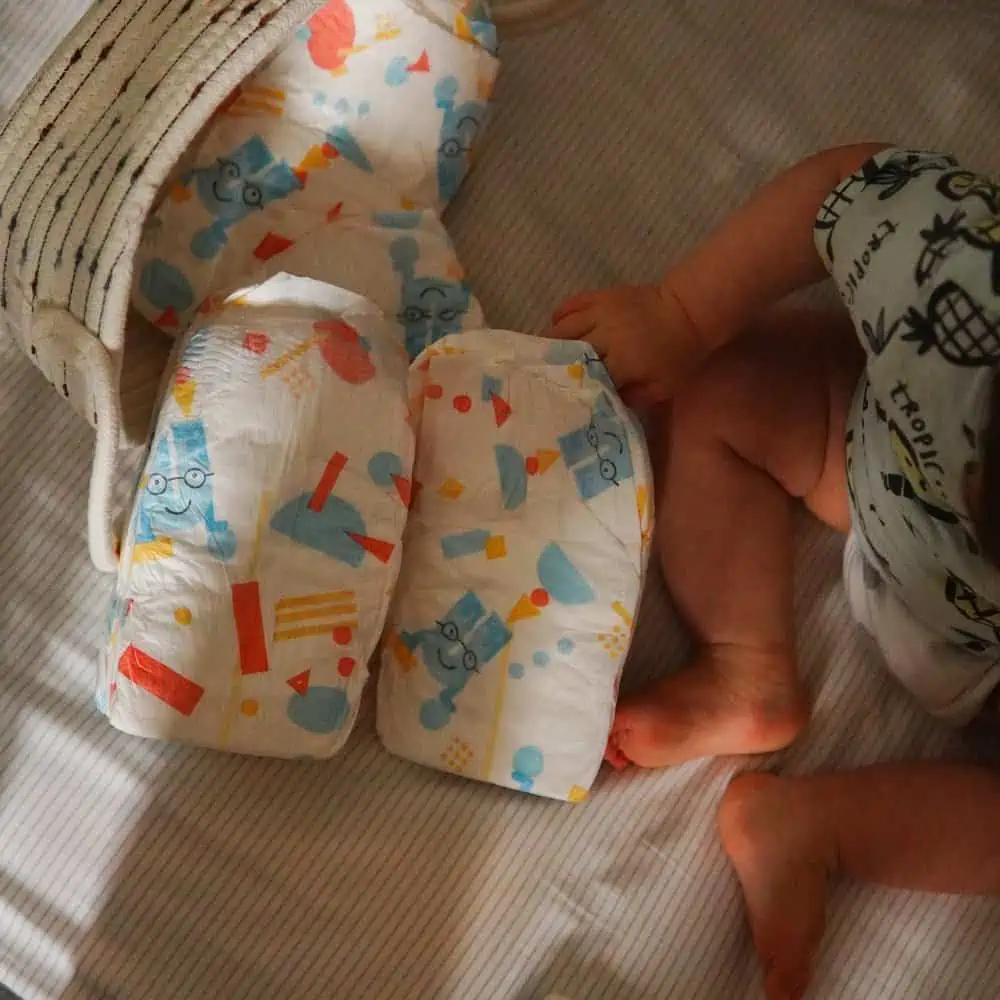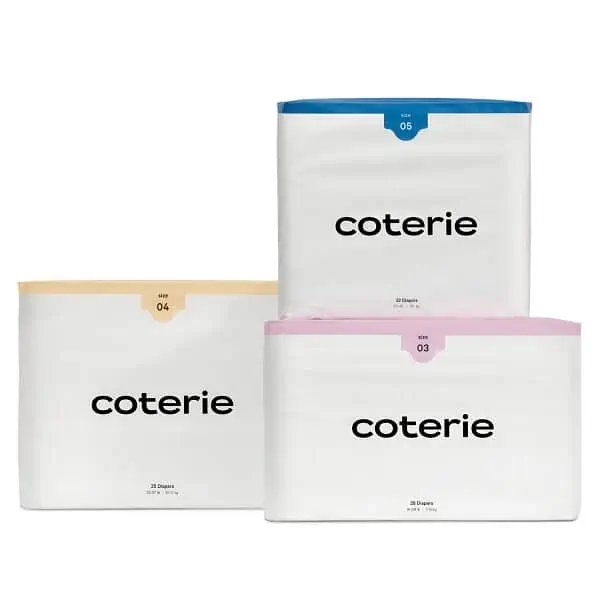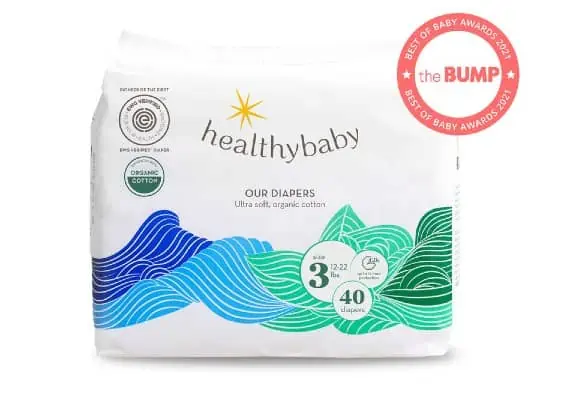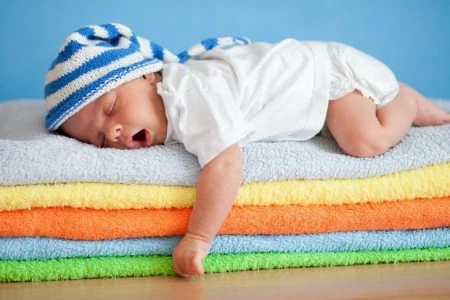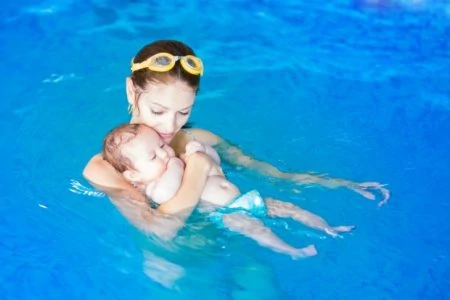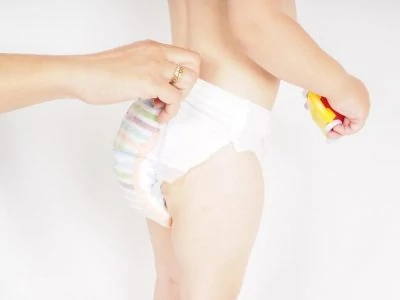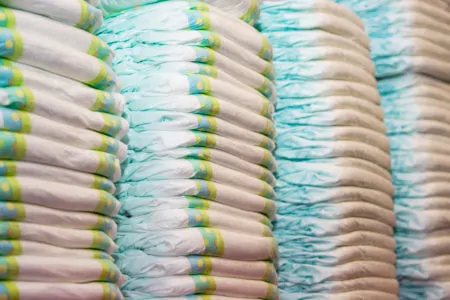Disposable diapers are a lifesaver for convenience, but the environmental cost is steep. Did you know standard diapers take roughly 500 years to decompose (1)? That is a long legacy for a dirty diaper.
If the idea of cloth diapering feels overwhelming, don’t worry. You can still reduce your carbon footprint with eco-friendly disposable diapers. These brands swap petroleum-based plastics for plant-based materials, offering a greener way to keep your baby dry.
We analyzed brand transparency, materials, and real parent reviews to find the top 10 sustainable options. Whether you need superior absorbency or hypoallergenic materials, we have you covered.
- Twice as plant-based
- Offer fantastic leak protection
- Delicate on skin
- Fast absorbent, prevents diaper rash
- Control leaks pretty well
- Clean ingredients, plush feeling
- Absorbent, great for overnight
- Soft organic cotton
- Comfy, stretchy waistband and snug leg
- Chlorine-free construction
- Multiple design options
- Affordable, high quality product
- With RashShield protection
- Comfortable and fitted
- Breathable, stretchy waistband
- 87% biodegradable materials
- 2x more absorbent
- Super plush & soft
- Plant-based & earth friendly materials
- Great for active kids
- 5-star rating, certified Biobased
- Soft, biodegradable materials
- Flexible waistband & leg cuffs
- Minimize allergies and diaper rash
- Leaves no ink or dye prints
- Hypoallergenic, great for sensitive skin
- Compostable
- 53% plant-based
- Made with natural ingredients
- Cruelty-free and 0% oil-based plastic
Types of Eco-Friendly Diapers
When you decide to go green with diapering, you generally have three paths; disposable, cloth, or hybrid. Here is the breakdown of each to help you decide what fits your lifestyle.
Disposable
Disposable diapers are the standard for convenience. Eco-friendly versions take that convenience and add a layer of sustainability. These diapers use biodegradable materials like bamboo or wood pulp instead of plastics.
However, “biodegradable” doesn’t always mean you can toss them in your backyard compost. Most still require industrial composting facilities to break down properly. The big win here is that they avoid harsh chemicals like chlorine bleach and fragrances, making them gentler on your baby and the manufacturing ecosystem.
Pros
- Better materials: Uses plant-based inputs rather than just petrochemicals.
- Convenience: Just as easy to use as traditional brands like Pampers or Huggies.
- Non-toxic: Usually free from fragrances, dyes, and chlorine bleach.
- Packaging: Often comes in recyclable or reduced-plastic packaging.
Cons
- Disposal limits: Many still end up in landfills unless you have access to industrial composting.
- Greenwashing: Some brands exaggerate their eco-claims, so reading the label is vital.
- Cost: Typically more expensive per diaper than standard store brands.
Cloth
Cloth diapers remain the gold standard for sustainability. While they require more effort, they create zero waste in landfills. The upfront cost is higher, but because you wash and reuse them, they save a significant amount of money over the years.
Modern cloth diapers aren’t just towels and safety pins. They come with snaps, waterproof covers, and fitted inserts. Materials range from cotton and bamboo to hemp, offering great breathability for your baby’s skin.
Pros
- Material variety: Choose from natural fibers that suit your baby’s skin sensitivity.
- One-time buy: Many styles grow with your baby, eliminating the need to buy sizes constantly.
- Cost-effective: Huge savings over 2-3 years compared to buying disposables.
- Zero waste: Keeps thousands of diapers out of landfills.
- Potty training: Some studies suggest cloth-diapered babies potty train earlier (2).
Cons
- Upfront cost: Building a stash can cost a few hundred dollars initially.
- Resource use: Requires water and electricity for frequent laundry loads.
- Learning curve: Finding the right fit and wash routine takes practice.
- Convenience: Not all daycares are willing to handle cloth diapers.
Hybrid
Hybrid systems offer a middle ground. They consist of a reusable outer cloth cover and a disposable insert. The goal is to reduce plastic waste while maintaining the ease of a disposable change.
The inserts are usually plastic-free and biodegradable (some are even flushable, though you should check your plumbing first). You reuse the cover multiple times before washing, which cuts down on laundry compared to full cloth systems.
Pros
- Flexibility: Switch between cloth inserts at home and disposable inserts for travel.
- Less waste: Reduces landfill impact compared to full disposables.
- Skin health: Inserts are typically free from bleach, dyes, and fragrances.
- Longevity: Outer shells are adjustable and durable.
Cons
- Cost: Can be pricey since you buy covers plus ongoing disposable inserts.
- Leakage: Some parents find hybrids leak more than full disposables.
- Complexity: Requires assembling the diaper before the change.
How to Choose Environmentally Friendly Diapers
Since we are focusing on disposable eco-friendly options in this guide, you need to know what separates the good from the “greenwashed.” Here are the key criteria to look for.
Product Reviews
Ready to ditch the plastic? Here are 10 disposable options that prioritize the planet without sacrificing performance.
Kudos The Ultimate Diaper
Best Cotton Eco-Friendly Disposable Diaper
Kudos stands out in the crowded diaper market for one major reason: 100% cotton touches your baby’s skin. Most other “natural” diapers still use plastic topsheets, but Kudos uses clean, unbleached cotton. This is a game-changer for babies with eczema or sensitive skin.
Beyond the materials, the performance is solid. They utilize a technology called DoubleDry™, which distributes wetness evenly to prevent that heavy, sagging feeling. In our experience, they hold up incredibly well overnight without leaking. While they aren’t fully compostable, their commitment to replacing plastic with cotton is a huge step forward.
Pros
- Cotton liner: The only disposable diaper where 100% cotton touches the baby’s skin.
- High absorbency: DoubleDry™ tech prevents sagging and leaks.
- Sensitive skin safe: OEKO-TEX Standard 100 certified; free from chlorine and fragrances.
- Sourcing: Cotton is sourced responsibly in the USA.
- Design: Fun, modern prints that aren’t cheesy.
Cons
- Disposal: Must be thrown in the trash; not compostable.
- Price: On the higher end of the price spectrum.
Our Ratings
Product Specs
| Materials | Cotton, corn starch, sugar cane, pulp, and breathable polyethylene |
| Made Without | Chlorine, latex, parabens, lotions, fragrances, phthalates |
| Sizing | 8-35+ pounds |
| How to Dispose | In the trash |
| Price | $$ |
Coterie The Diaper
Best Leak-Proof Eco-Friendly Disposable Diapers
If you are dealing with constant blowouts, Coterie is often cited as the solution. These diapers are engineered for maximum absorbency and wicking speed. They dry incredibly fast, which keeps moisture away from the skin and reduces the risk of diaper rash.
Coterie positions itself as a luxury diaper, and the feel matches the claim. They are cashmere-soft and thick. While they aren’t the most eco-friendly on this list regarding plant content (about 25% plant-based), they are incredibly clean. They are free from fragrance, latex, rubber, dyes, alcohol, and chlorine bleaching. If performance and preventing leaks is your #1 priority, this is the pick.
Pros
- Superior absorbency: Holds significantly more liquid than standard brands; great for nights.
- Fast wicking: Absorbs liquid 4x faster to keep skin dry.
- Incredibly soft: The material feels like fabric rather than crinkly plastic.
- Clean ingredients: TCF pulp and free from harsh chemicals and irritants.
- Wide fit: Provides great coverage for larger babies.
Cons
- Cost: One of the most expensive disposable options available.
- Wetness indicator: The gray indicator can be hard to see in dim lighting.
- Availability: Primarily available online, harder to find in local stores.
Product Specs
| Materials | SAP, TCF wood pulp, nonwoven backsheet, polypropylene, and polyester |
| Made Without | Fragrance, latex, alcohol, parabens, phthaltaes, chlorine, VOCS and more |
| Sizing | Newborn to 35+ pounds |
| How to Dispose | In the trash |
| Price | $$-$$$ |
Our Ratings
HealthyBaby Our Diaper
Best Sustainably-Made Eco-Friendly Disposable Diapers
HealthyBaby takes safety standards to a new level. They are the first EWG Verified™ diaper, meaning they meet the strictest standards for health and transparency. If you are worried about hidden chemicals, this certification offers major peace of mind.
The diapers are enriched with organic cotton for softness and use plant-based renewable materials like sugarcane to replace petroleum. They are manufactured in Europe in a carbon-neutral facility. Parents report they fit well and hold up against big messes, though the price point reflects the premium materials and manufacturing standards.
Pros
- EWG Verified: Meets the highest standards for ingredient safety and transparency.
- Brain health focused: Designed to minimize exposure to neurotoxins.
- Soft feel: Premium organic cotton outer layer is gentle on legs and waists.
- Plant-based: Utilizes sugarcane and sustainable wood pulp.
- Performance: Surprisingly durable and absorbent for such a natural product.
Cons
- Price: Very expensive compared to standard diapers.
- No indicator: Lacks a wetness indicator, which some parents rely on.
- Sizing: Can be tricky to get the perfect fit initially.
Product Specs
| Materials | Organic cotton, FSC-certified wood pulp, sugar cane, polypropylene, sodium polyacrylate, and more |
| Made Without | Parabens, phthalates, fragrances, optical brighteners, chlorine and 2000+ more banned ingredients |
| Sizing | 6-27+ pounds |
| How to Dispose | In the trash |
| Price | $$-$$$ |
Our Ratings
Joone The Perfect Diaper
Best Premium Eco-Friendly Disposable Diaper
Joone brings French style and transparency to the diaper aisle. They are famous for publishing their full toxicology reports, so you know exactly what is (and isn’t) in the product.
Beyond the transparency, these diapers are adorable. They feature some of the cutest prints on the market, printed with safe, water-based inks. Functionally, they use TCF cellulose and superabsorbent beads that handle heavy wetting well. While they feel premium, the subscription model can actually make them competitively priced against other high-end eco-brands.
Pros
- Radical transparency: They publish full chemical analyses of their diapers.
- Style: Offers a huge variety of chic, fashionable prints.
- Clean tech: Totally chlorine-free and free from latex and lotions.
- Comfort: Soft materials with flexible waistbands.
- Origin: Made in France with high European safety standards.
Cons
- Subscription focus: Best pricing requires a subscription commitment.
- Shipping: Shipping times can vary depending on stock.
Product Specs
| Materials | SAP, TCF cellulose, sugar cane, corn starch, and polyethylene |
| Made Without | Chlorine, latex, lotion, perfume, endocrine disruptors |
| Sizing | 4-66 pounds |
| How to Dispose | In the trash |
| Price | $-$$ |
Our Ratings
Parasol Clear+Dry™ Natural Disposable Diapers
Best Eco-Friendly Disposable Diaper for Diaper Rash
Diaper rash is often caused by prolonged exposure to moisture. Parasol addresses this with their RashShield™ technology. The diaper is designed to instantly wick moisture away from the skin and lock it deep in the core, leaving the topsheet dry to the touch.
The fit is another highlight; they have a high-rise waist and a contoured cut that moves with active babies. They are extremely thin and lightweight, which prevents that “bulky diaper” waddle, yet they hold a surprising amount of liquid.
Pros
- Rash prevention: Wicks moisture instantly to keep skin dry and rash-free.
- Fit: High-waisted design prevents blowouts up the back.
- Feel: incredibly soft and lightweight; feels barely there.
- Breathable: Micro-pores allow air to circulate, reducing humidity.
- Safe: Free from chlorine, alcohol, dyes, and fragrances.
Cons
- Feeling damp: Because they are breathable, clothing can sometimes feel slightly clammy on the outside.
- Sizing: Their sizing chart is unique; double-check weight limits before ordering.
Product Specs
| Materials | TCF wood pulp, polypropylene fabric, sodium polyacrylate, polyethylene film, and elastic |
| Made Without | Chlorine, alcohol, dyes, chemicals, fragrances, lotions, parabens, latex, metals, preservatives, and phthalates |
| Sizing | 7-26+ pounds |
| How to Dispose | In the trash |
| Price | $$ |
Our Ratings
Andy Pandy Biodegradable Disposable Diapers
Best Biodegradable Eco-Friendly Disposable Diapers
Andy Pandy was one of the original bamboo diapers on the market, and they remain a favorite for a reason. They use bamboo viscose, which is naturally soft, antibacterial, and sustainable. The brand claims the diaper is roughly 87% biodegradable, which is significantly higher than conventional brands.
The bamboo material is naturally thermal-regulating, meaning it keeps babies cool in summer and warm in winter. They are simple, white diapers without busy prints, focusing purely on function and eco-friendliness.
Pros
- Bamboo power: Naturally hypoallergenic and antibacterial.
- Eco-cred: High percentage of biodegradable materials (approx 87%).
- Comfort: Silky soft texture prevents chafing.
- Give back: The company supports St. Jude Children’s Research Hospital.
- Indicator: Includes a wetness indicator strip.
Cons
- Sizing: Can run large compared to other brands.
- Durability: Bamboo is soft but can tear if the tabs are pulled too aggressively.
- Price: Premium pricing for bamboo materials.
Product Specs
| Materials | Bamboo, TCF fluff, SAP and velcro adhesive |
| Made Without | Parabens, platelets, sulfate, dyes, synthetic fragrance, chlorine |
| Sizing | 7-26+ pounds |
| How to Dispose | Compost |
| Price | $$-$$$ |
Our Ratings
Dyper Bamboo Cloth Alternative Diapers
Best Fitted Eco-Friendly Disposable Diapers
Dyper (yes, that’s the name) has exploded in popularity thanks to their “REDYPER” service. For an extra fee, you can ship your soiled diapers back to them, where they are industrially composted rather than sent to a landfill. This solves the biggest issue with disposable diapers.
Even without the service, the diapers are excellent. Made from viscose from bamboo, they are unprinted, unscented, and incredibly soft. They are wider than many other brands, offering great coverage for active toddlers. They are also Standard 100 certified by OEKO-TEX.
Pros
- Composting program: The optional REDYPER service allows for responsible disposal.
- Material: 100% bamboo viscose is soft, odorless, and breathable.
- Chemical-free: No chlorine, latex, alcohol, perfumes, or PVC.
- Transparency: Clear about ingredients and sourcing.
- Delivery: Their SOS delivery service can rush diapers to you if you run out.
Cons
- Sagginess: Bamboo absorbs well but can feel squishy and saggy when full.
- Fit: The rectangular shape works well for some but gaps on skinny babies.
Product Specs
| Materials | Viscose from bamboo, PP, bioplastic, elastane, sodium polyacrylate, and more |
| Made Without | Chlorine, latex, lotions, TBT, alcohol, and phthalates |
| Sizing | <10-27+ pounds |
| How to Dispose | Use REDYPER service or in the trash |
| Price | $$-$$$ |
Our Ratings
Bambo Nature Eco Friendly Baby Diapers
Best Affordable Eco-Friendly Disposable Diapers
Bambo Nature has been a staple in the eco-community for years. They strike a great balance between performance and environmental responsibility without being the most expensive option on the shelf. They hold the Nordic Swan Ecolabel, a rigorous environmental standard.
These diapers are thinner than many bamboo options but surprisingly absorbent. They use high-quality fluff pulp that absorbs liquid quickly. While not biodegradable in a backyard compost, their manufacturing process is designed to minimize waste and emissions.
Pros
- Certified: Holds the Nordic Swan Ecolabel and Asthma Allergy Nordic certification.
- Performance: Thinner profile allows for easy movement without bulk.
- Skin safe: Free from parabens, perfumes, and lotions.
- Value: Often more affordable than luxury brands like Coterie or Kudos.
- Breathable: Backsheet allows heat to escape to keep baby cool.
Cons
- Tabs: The side tabs can sometimes be tricky to unfold quickly.
- Sizing: European sizing can differ slightly from US standards; check weight ranges.
Product Specs
| Materials | TCF fluff, polymer, SAP, PE, PP, potassium sorbate, ECF fluff, and more |
| Made Without | Chlorine, perfume, dyes, phthalates, synthetic preservatives |
| Sizing | 4-35+ pounds |
| How to Dispose | Specific diaper disposal system |
| Price | $ |
Our Ratings
Nurture Diapers by BioBag
Best Hypoallergenic Eco-Friendly Disposable Diapers
Nurture diapers are produced by BioBag, a company famous for compostable bags. Naturally, they applied that expertise to diapers. These are made in Denmark in a wind-powered facility, keeping the carbon footprint low during manufacturing.
They are designed to be hypoallergenic, avoiding all common irritants. The materials are breathable and contain more plant-based content than standard diapers. They are also commercially compostable if you have access to a service like EarthBaby in the Bay Area.
Pros
- Energy efficient: Manufactured using 100% wind power.
- Clean design: No dyes or prints, just simple white diapers.
- Sensitive skin: Excellent for babies prone to contact dermatitis.
- Compostable potential: Compatible with specific industrial composting services.
Cons
- Wetness indicator: Often unreliable or hard to read.
- Availability: Can be difficult to find in stock compared to larger brands.
- Fit: Leg cuffs can be loose on smaller babies.
Product Specs
| Materials | Virgin cellulose fluff, SAP, PP, PE, PUR, PLA, and viscose |
| Made Without | Chlorine, perfume, inks, dyes, phthalates, dioxin, latex, and lotions |
| Sizing | 4-35+ pounds |
| How to Dispose | In the trash or using the EarthBaby diaper service system |
| Price | $$$ |
Our Ratings
Eco by Naty Baby Plant-Based Diapers
Best Plant-Based Eco-Friendly Disposable Diapers
Eco by Naty is one of the few brands that boasts a high percentage of plant-based materials across the entire diaper, not just the core. They use plant-based plastics for the backsheet and leakage barrier, which helps the diaper breathe better than standard plastic.
They are Vincotte certified, meaning independent organizations verify their bio-based content. Because they rely heavily on natural materials, they feel a bit different, more like paper than fabric, but many parents love that natural texture.
Pros
- Plant-based barrier: Uses corn-based film instead of petroleum plastic for leak protection.
- Certified: OK Biobased certification confirms the renewable ingredient content.
- No nasties: Free from VOCs, fragrance, and chlorine.
- Global reputation: A trusted Swedish brand with a long history in eco-products.
Cons
- Texture: The outer shell can feel a bit stiff or papery to some.
- Durability: The plant-based tabs can tear if pulled too hard.
- Leaks: Some parents report issues with leaks during overnight use.
Product Specs
| Materials | Sugar cane, corn, wood pulp, cotton, PE, SAP |
| Made Without | Chlorine, fragrances, latex, lotions, and bleaching |
| Sizing | 4-35+ pounds |
| How to Dispose | In the trash |
| Price | $ |
Our Ratings
| Product | Best | Sizing | How to Dispose | Price |
|---|---|---|---|---|
| Kudos The Ultimate Diaper | Best Cotton | 8-35+ pounds | In the trash | $$ |
| Coterie The Diaper | Best Leak-Proof | Newborn to 35+ pounds | In the trash | $$-$$$ |
| HealthyBaby Our Diaper | Sustainably-Made | 6-27+ pounds | In the trash | $$-$$$ |
| Joone The Perfect Diaper | Best Premium | 4-66 pounds | In the trash | $-$$ |
| Parasol Clear+Dry™ Natural Disposable Diapers | Best for Diaper Rash | 7-26+ pounds | In the trash | $$ |
| Andy Pandy Biodegradable Disposable Diapers | Best Biodegradable | 7-26+ pounds | Compost | $$-$$$ |
| Dyper Bamboo Cloth Alternative Diapers | Best Fitted | 10-27+ pounds | Use the REDYPER service | $$-$$$ |
| Bambo Nature Eco Friendly Baby Diapers | Best Affordable | 4-35+ pounds | Specific diaper disposal system | $ |
| Nurture Diapers by BioBag | Best Hypoallergenic | 4-35+ pounds | using EarthBaby service | $$$ |
| Nurture Diapers by BioBag | Best Plant-Based | 4-35+ pounds | In the trash | $ |
Eco-Friendly Diaper FAQs
Eco-Friendly Round-Up
The statistic about diapers lasting 500 years is scary, but don’t let it paralyze you. You don’t have to be perfect to make a difference. Switching to any of these eco-friendly disposable diapers helps reduce plastic use and keeps harsh chemicals away from your baby.
Whether you choose the cotton luxury of Kudos, the bamboo softness of Andy Pandy, or the transparency of Joone, you are making a solid choice. Pick the one that fits your budget and your baby’s bottom, and pat yourself on the back for doing your part.
